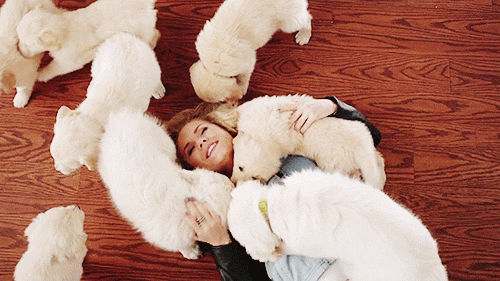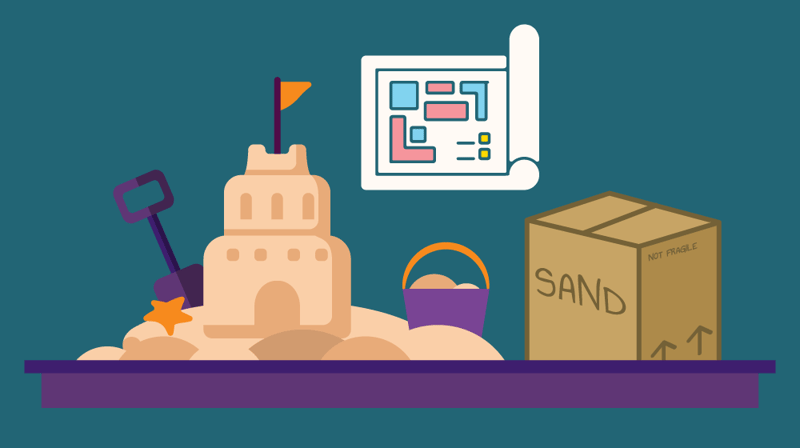If you’re anything like me, you like copious amounts of lists. To-do lists, grocery lists, wish lists, life lists… and even lists of lists.
Here’s a massive list of factors you can assess at an event and if you’re not already an assessment pro, start incorporating into a bank of ideas.
Understand Attendee Behavior

- Who didn’t show up? Why?
- Who didn’t we invite?
- How did attendees decide to attend?
- When did the majority of the attendees enter the event?
- When did the majority of attendees leave the event?
- How many attendees showed up?
- How did attendees enjoy themselves?
- What direction did the attendees come from when entering the building/event space?
- How long did attendees stay at the event?
- Why did attendees stay?
- Were there any students who showed up and chose not to participate?
When planning out events, we tend to forget about the range of personalities that may show up. Think about a team in terms of extroverts, introverts, and ambiverts. Reflect on how you’re creating spaces for a diverse group of people and how to engage them differently. Looking to incorporate team builders into your event? Consider these engaging activities. - Did the attendees bring friends/guests? If so, on average how many?
- What type of food was most popular?
- Why did attendees show up initially?
- How many repeat attendees came to the event?
- In what ways have we increased attendee loyalty?
Develop something that is special to your campus organization or brand like unique incentives. The formula for hooking an attendee to an event is making them feel part of a larger community by connecting with others. Once you master those feelings, ask your loyal attendees to invite others to your events and expand your reach. Find out what builds a strong sense of community both online and in-person.
Analyze Attendee Demographics
- What types of food allergies or sensitivities exist among guests (gluten free, vegetarian, vegan)?
Oops! You forgot to ask dining services to take peanuts off a food tray at your event. Simply picking them off will not solve a problem if attendees have a food allergy to nuts. Brush up on food allergy education before your next event. - What was the most popular major represented at the event?
- Was this event targeted towards a specific class year?
- How many on-campus versus off-campus residents?
- How do we understand the diversity of attendees?
- How many first-time event attendees came to the event?
- How many unique attendees were at the event?
Identify each unique or individual person that attended your event. For example, if 200 attendees total attended 2 events, but 50 of the same people went to both events, there’d only be 150 unique attendees. - If the event was planned by a specific club/org, how many attendees came that weren’t members?
- How are attendees tracked?
Identifying who showed up to your event allows you to further analyze your target audience. Transform how you collect data around your events to understand what’s popular among the modern college student.
Optimizing Events
- Why are you hosting the event?
Really get to the bottom of WHY. We prefer asking “why” 5 times. - How was the event planned?
- How well did the programmers organize the event?
- How can we provide more opportunities for attendees to join our club/org in the future?
- What was the target audience?
It’s not enough to assume what the audience is looking for when choosing what event to attend. Sit down with your team and accurately define your target audiences to optimize your efforts. Here’s a quick guide to help! - What type of program was offered?
- How will this event be different in the future?
- How was the event aligned with other campus initiatives?
- Was the event in line with mission/values of institution/department?
- How did the time of the event impact attendance?
- Were forms, surveys, polls, or waivers utilized before, during, or after the event?
Creating a quick survey that attendees can fill out at the beginning of the event helps to get a pulse on feelings and emotions surrounding the event or attendee interest at large. Use polls and forms to determine music choice, incentives, or future programming ideas. - What personnel were needed for the event (security officers, police officers, student affairs staff, etc.)?
- How can we provide more opportunities for attendees to join our club/org in the future?
- How can we measure attendee engagement?
- Was the event on or off-campus?
- Was the event formal or informal?
- What types of transportation were available to get to the event?
- How did time of the month affect event attendance?
- What other events were occurring at the same time?
Having a system with a master calendar that everyone has access to can help with planning ahead to make sure events aren’t competing for attention and the same audience. When planning events, having organizers suggest the audiences they hope to attract and help spread out what’s happening and allow audiences to participate in more. - Was the event open to guests?
- If a recurring event, was it more or less successful than a past event?
- Was the event mandatory?
- Was everything at the event planned?
- What surprised us about the event?
- What was going on during the highest point of the event (i.e. when the most students were engaged/there)?
- Was this an annual, monthly, or one-time event?
- What was happening during the lowest point of the event?
- How did the event end?
- Was the event a part of a series of events (Welcome Week, Spring Weekend)?
- How many staff members attended?
- If invited, how were faculty involved?
- What thoughts did you have during the event to make changes for next year?
- Were there any post-event opportunities offered to further engage attendees?
This is where the magic happens. Attendees have time to process their feelings and emotions surrounding your event and it’s the best time to obtain crucial feedback for next time. Offering post-event opportunities for attendees to continue connecting in-person or online helps boost event engagement. Reward post-event activity by responding to it from your brand’s social media accounts or offering incentives for feedback.
Atmosphere & Accessibility

- What type of surface did the event take place on (grass, pavement, etc.)?
- Were the attendees comfortable?
- How much space was provided at the venue?
- Did Mother Nature impact the event in any way?
Not only does weather impact the events we plan, but it also has a funny way of impacting our mood. Most people like sunny days, unless you’re a vampire or something. Pleasant weather actually makes people more positive about everything and tends to manipulate our moods. There was a study completed showing that humans tend to tip more at restaurants more on sunny days than on cloudy ones. Try to use weather to your advantage and plan impromptu programs. - How many chairs did we need?
- How did accessibility impact the event/attendees (did the elevator work)?
Event planners often overlook things like real-time captioning, large prints, or accessible spaces for attendees. Check out Oregon State’s accessibility guidelines for planning events to get more ideas to make your event more inclusive. - Were there multiple entry points to the event?
- How did the temperature of the room impact the event or attendees?
- How did location impact the event?
Did the style of location fit what the content of the event was? Did the location make the event easy for people walking by to join, or was it a destination? How easy was it to find? Location can play as deal-breakers or even deal-makers for some. - Did the event require participation of some sort?
- Was the event indoors or outdoors?
- What emotions or feelings came up during this event for attendees?
- How were students prepared for the event (mentally, physically, clothing-wise)?
Improving Marketing & Online Engagement

- How can we develop better public relations practices after holding this event?
- What social media platform(s) were most popular for this event?
Identify which social media your audience is most active on – Facebook, Twitter, Vine? Leverage different features on each account to leverage more engagement. Don’t forget to engage online during the event. Encourage your attendees to live tweet or grab a few personal testimonials to post boost more sharing. Use accounts as assessment tools to gain more attendee feedback. - What social media platform(s) were we missing?
- How did attendees find out about the event?
- Was the event advertised on all marketing mediums (campus radio, newspaper, offices, etc.)?
- What does the event name have to do with the event?
- How did the title of the event impact attendance/advertising?
- Did the event have a hashtag?
Advertise and converse on an event hashtag. If you use a hashtag, plan it out in advance and use it across all marketing materials so people can start promoting and tweeting about your event. - Were there directional signs posted for attendees?
- When were positive or negative comments via social media about the event?
- How far in advance was the event advertised?
- How did RSVP-ing before the event impact attendance?
- How did attendees engage post-event?
- In what ways were the event organizers ‘listening socially’?
- How did we engage with attendees online via social media?
- How was the event marketed to be inclusive?
Determining Return on Investment (ROI)
- What was the cost per head for this event?
- How much food did we have leftover at this event?
College students and student affairs professionals are on a mission to reduce food waste. In 2010, the University of Maryland created the Food Recovery Network, where colleges and universities donate food in efforts to give back to the community while reducing food waste at the same time. Check out how your institution can become more sustainable. - Was anyone outside the normal audience impacted?
Typically we think about students and other on-campus audiences when it comes to who’s benefiting from an event. Think about who/what else was impacted. For example, was there community service involved? Did we improve the environment? - How did we meet the goals we planned?
Make sure your goals are specific, measurable, achievable, relevant, and time-bounded. Learn more about the SMART criteria. - Were there useful giveaways at the event?
- Was swag provided?
- Did our event fulfill an intended purpose?
Before creating events, have intended purposes discussed and agreed upon for everyone involved. One could be creating a more inclusive and understanding culture among students. For example, it’s Black History Month, so we could create an event to create dialogue around current issues as a step above just awareness. - What did people learn from the event?
- Did it fulfill specific learning outcomes?
- Did the event cost attendees money?
- How was the event funded?
- How did this event impact our semester/year of programming on a macro level?
- What could have been done differently to improve any of these ROI measurements?
Getting All The Ducks In A Row
It’s important to choose specific questions for your event to focus on areas you’re looking to assess ahead of time. The next step is being able to measure these and figuring out what they mean to your team! Stay tuned and subscribe below for a follow-up blog article on how to measure these factors successfully!
Our team came up with this extensive list through a brainstorming session in less than 10 minutes. We’re positive you can add more to the list!
Did we miss anything? Tweet us @themoderncampus and share your ideas!





